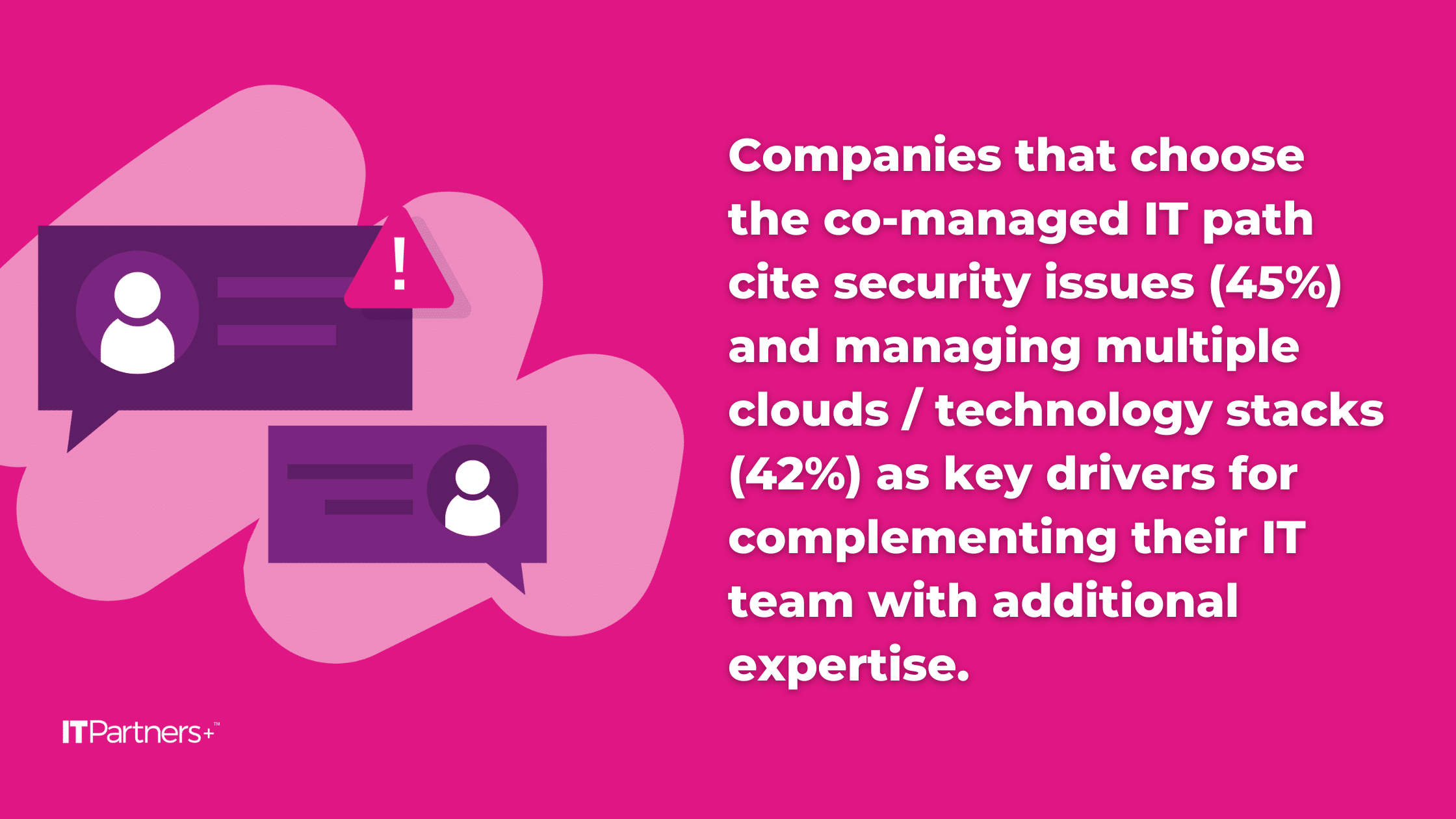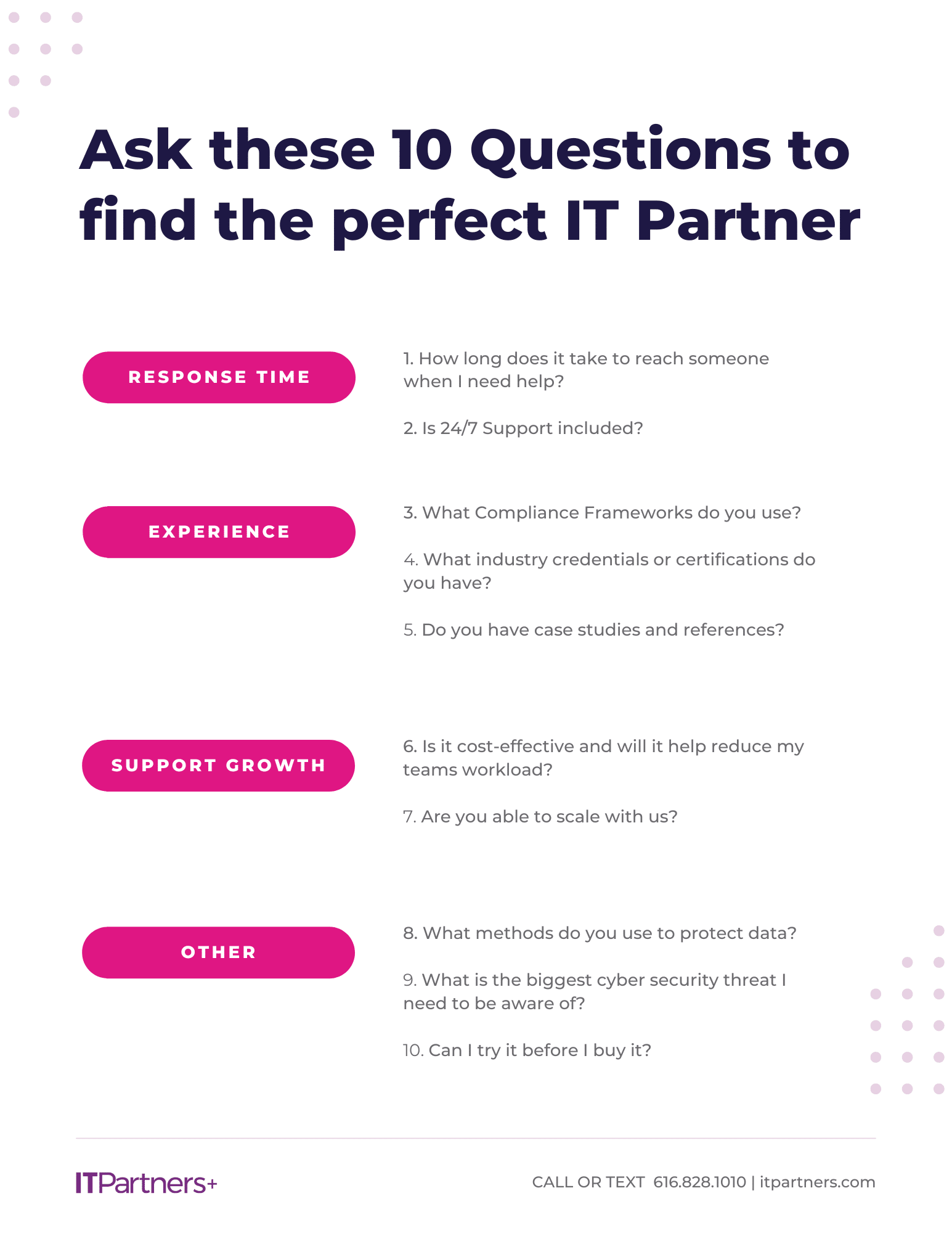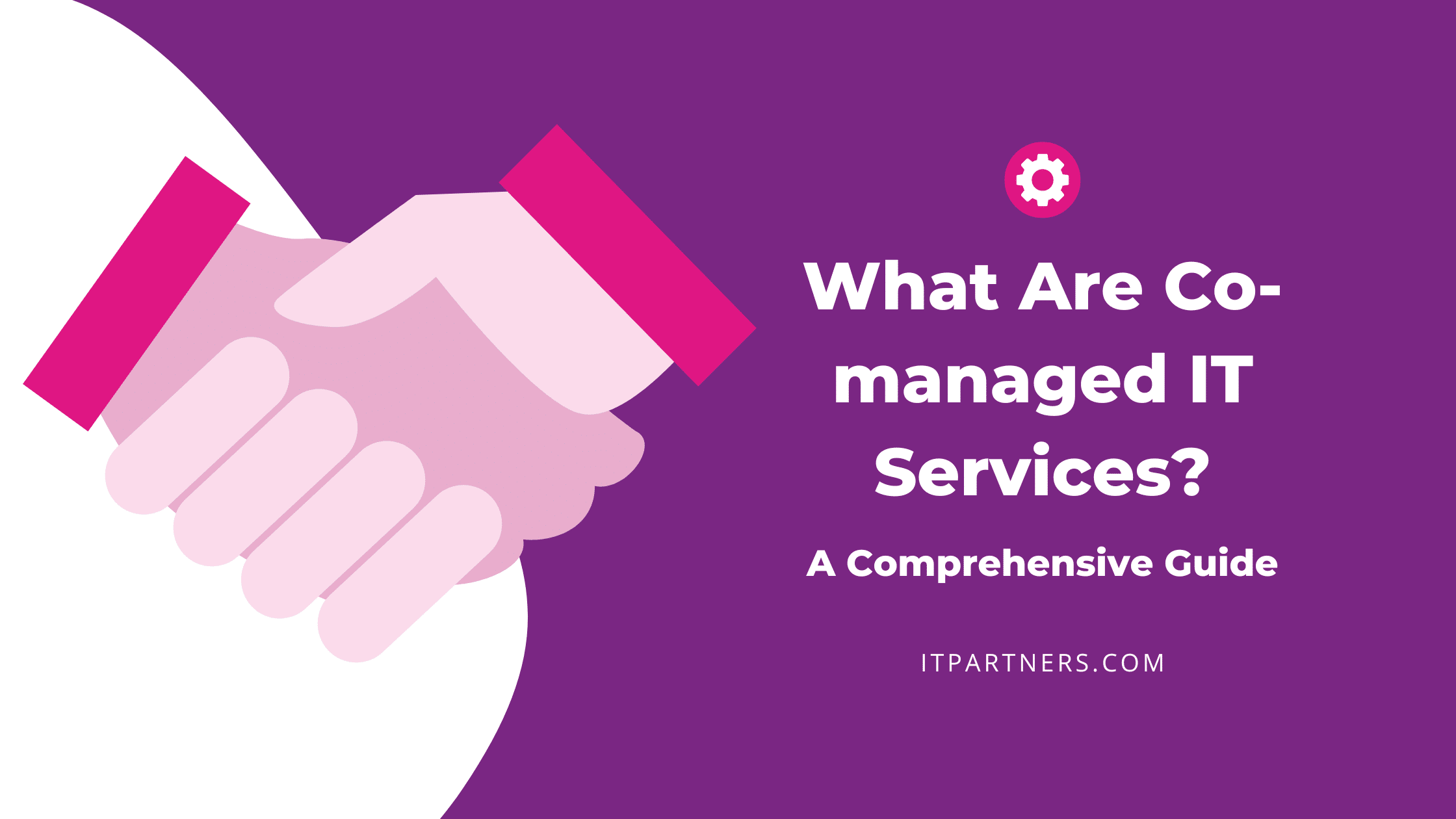If you’re a leader in your organization trying to balance the demands of your in-house IT department with the rapidly evolving landscape of technology, you may have come across the term “co-managed IT services.” But what exactly does it mean and how can it benefit your organization?
This guide aims to answer all your questions about co-managed IT services, exploring what they are, how they work, who can benefit from them, and the pros and cons of this model.
The Co-Managed IT Service Model
Co-Managed IT is a service model that lets organizations customize their IT management. By blending the expertise and resources of an external IT provider with the strategic framework of an internal IT team, co-managed IT services enable businesses to optimize efficiency and manage their IT resources effectively.
Co-Managed IT gives you the best of both worlds! You have the opportunity to retain control over your in-house IT operations, while also accessing the vast resources and up-to-date knowledge of an external Managed IT Service Provider. This model is about creating a partnership that enhances, supports, and supplements your existing IT team, providing the flexibility to pick and choose the resources you need, when you need them.
Top reasons for supplementing IT with a co-managed model:



How Do Co-Managed IT Services Work?
The co-managed model offers a tailored approach to IT management. It begins with a thorough analysis of your existing IT department’s needs, skills, resources, tools, and abilities. Once the gaps in tech or resources are identified, you partner with a co-managed IT service provider that can supplement these areas.
The beauty of co-managed IT services lies in their flexibility. You retain control over the services that you want to keep in-house, while outsourcing the areas that you want to offload (like Employee Security Training, Level 1 Help Desk, etc). As your needs or resources change, your co-managed strategy can adapt accordingly.
For instance, some companies may choose to handle helpdesk support in-house, while relying on an external partner for large-scale strategies and security. Others might do the opposite. This flexibility allows for a co-managed IT strategy that is uniquely tailored to the needs of each organization.
Who Can Benefit from Co-Managed IT Services?
Overworked IT Staff
New Projects
Knowledge Gaps
Tech Debt
These services offer a practical solution to tackle tech debt, such as outdated infrastructure, postponed updates, or general tech administrative work by providing access to a team of external IT specialists.
Various organizations, including schools, healthcare facilities, manufacturing companies, law firms, local government, the public sector, enterprises, and financial institutions, can often benefit from co-managed IT services.

Pros of Co-Managed IT Services
Co-managed IT services come with numerous advantages:
Control: Your IT team maintains control over operations, choosing which areas to manage in-house and which to outsource.
Reduced Responsibility: With third-party support, there’s less for you to manage. You gain access to a range of experienced IT professionals without the responsibility of training new staff members.
Staying Up-to-Date: You can keep pace with IT trends, such as security, software, and technology, without the need to continually train your in-house staff.
24/7 Support: Co-managed IT services can offer around-the-clock support, essential for businesses operating outside standard business hours or when disaster strikes unexpectedly.
Cost Savings: By supplementing your existing IT team with an external specialist, you can achieve more with fewer on-site resources. This can result in significant cost savings for your IT budget
Employee Morale: A co-managed IT model can foster a more positive employee culture within your IT team. By providing them with the necessary resources to be successful, such as improved strategies, quick response times, professional consultations, and decision support, you’re creating a work environment that promotes longevity and better focus. This can lead to improved job satisfaction and productivity among your IT team, contributing to the overall success of your organization.
Flexibility: Co-managed IT services are highly flexible. As your needs or resources change, so does your co-management strategy.
Cons of Co-Managed IT Services
While there are many advantages to co-managed IT services, there are also some potential drawbacks that you should consider:
Dependence on External Support: While co-managed IT services can provide valuable support and expertise, there can be potential difficulties IF your Co-Managed support is not responsive. Look for providers that focus heavily on their response time and filter out vendors that aren’t able to stand behind their response time with data. Be sure to look for a partner that prides themselves on a fast response time!
Security: While most IT service providers have robust security measures in place, there’s always a risk when you’re opening up your systems to an outside entity. It’s crucial to ensure that your external provider complies with all necessary security protocols and standards to keep your data safe and secure. Look for providers that take security seriously and consider filtering out vendors based on their completion of a security audit, such as a Soc II Type 2 Audit.
ITPartners+ Successfully Completes SOC 2 Audit
“This is such a huge milestone and we completed it within our first five years, something that I never thought we would be able to do when just starting out, said Kevin Damghani, CEO of ITPartners+.
Cost: While co-managed IT services can lead to cost savings in many cases, there’s also a cost involved in hiring the services of an external IT provider. It’s important to weigh these costs against the potential benefits to determine if co-managed IT services are the right choice for your organization. No one likes being surprised by hidden fees, look for a provider that bills based on a flat rate structure and earns your business every month.
Co-Managed IT Services FAQ:
How will co-managed IT services integrate with our existing IT department?
Co-managed services are designed to complement your existing team, not replace it. The external team can work alongside your in-house IT staff, filling in the gaps and providing additional support as required.
What specific services can a co-managed IT provider offer?
What are the key performance indicators (KPIs) for a co-managed IT service?
How secure will my business data be with a co-managed IT service?
Can a co-managed IT service provider handle industry-specific IT needs?
How scalable are co-managed IT services?
Finding the Right Co-Managed IT Services Partner
The success of implementing co-managed IT services depends largely on the partner you choose. The right fit can take your business to new heights, while the wrong one can lead to unnecessary headaches.
Understand your partner’s approach, their capabilities, and how well they fit with your organization’s culture and needs. Look for a partner who understands your organization, aligns with your goals, and demonstrates a proven track record. Be sure to vet potential partners carefully – ask for references, review case studies, and don’t shy away from asking hard-hitting questions about their security measures, response times, and scalability.
In the end, it’s about forging a relationship that fosters open communication, mutual respect, and a shared commitment to driving your organization forward. Remember, it’s a partnership, not just a service. For more information – check out our list of top questions to ask before hiring a co-managed partner.
By combining the expertise and resources of external IT professionals with your existing IT team, you can optimize efficiency, improve service delivery, and achieve your organization’s goals. Co-managed IT services can offer a valuable solution for organizations that need to supplement their in-house IT capabilities.
Have more questions about Co-Managed IT? Contact us today! We’d love to answer any questions you might have.





